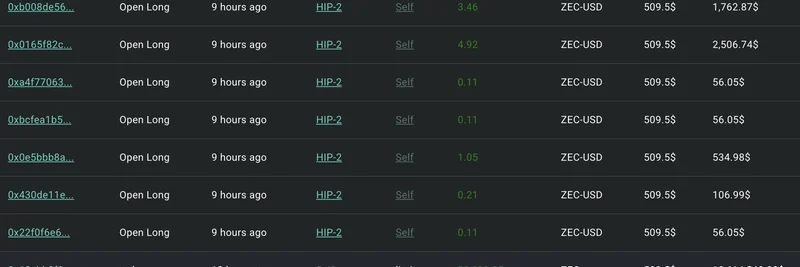Pi Network has made waves in the crypto world with its mobile mining approach, attracting millions of users eager to earn PI tokens without heavy hardware. Now, the project's venture arm, Pi Core Team Ventures, has stepped into the investment arena with its very first bet: OpenMind AGI. This move isn't just about funding—it's a strategic play at the intersection of artificial intelligence, robotics, and blockchain. Let's dive into what OpenMind is all about and why this could be a game-changer for the broader crypto landscape, including meme token enthusiasts looking for the next big narrative.
What is OpenMind AGI?
At its core, OpenMind is an open-source AI platform designed to power robots in real-world scenarios. Founded in 2024 by Stanford bioengineering professor Jan Liphardt, the company aims to make robots smarter and more collaborative. Think of it as the brains behind the brawn—software that lets machines process data, learn from experiences, and work together seamlessly.
OpenMind operates through two key pillars: OM1 and Fabric. OM1 is essentially a robot operating system (OS) that integrates popular AI models like OpenAI's GPT-4o with physical hardware. This allows robots—whether humanoid figures or quadruped (four-legged) bots—to handle tasks like navigation, communication, and even interacting with humans. For example, a robot could pull info from the web, analyze camera feeds, or post updates on social media platforms like X (formerly Twitter).
Fabric, on the other hand, is the decentralized network that ties everything together. It acts like a secure, peer-to-peer system for verifying machine identities, sharing data, and coordinating tasks. Using blockchain elements, Fabric ensures robots can trust each other, exchange skills (like language processing), and form teams for complex jobs. It's built with integrations like Base for on-chain identities and payments, making it a natural fit for crypto ecosystems.
In simpler terms, if you've ever used ChatGPT for text-based queries, imagine that level of AI smarts applied to physical robots that can move around your home or office. OpenMind's mobile app, still in beta, even positions itself as the "Uber for Robots," where users can request robot services, provide feedback, and help train the AI—all while minting on-chain identities.
Pi Network's Investment: Why Now and Why OpenMind?
Pi Network, known for its user-friendly approach to cryptocurrency mining via smartphones, has amassed a massive community. With Pi Core Team Ventures' first investment announced in October 2025, they're leveraging unused compute resources from Pi node operators to run AI workloads. This isn't just passive funding; it's about creating synergies where Pi's distributed network powers OpenMind's robotics ambitions.
The investment comes on the heels of OpenMind's $20 million funding round in August 2025, led by heavyweights like Pantera Capital and including players such as Coinbase Ventures and Digital Currency Group. Pi's involvement adds a layer of decentralization, potentially allowing everyday Pi users to contribute to AI training and earn rewards in the process. For meme token fans, this could spark new narratives around "AI-meme" hybrids, where community-driven projects like Pi evolve into tech powerhouses.
This partnership highlights a growing trend in crypto: blending AI with blockchain to solve real-world problems. OpenMind's focus on interoperability—making robots from different makers work together—mirrors how blockchains like Ethereum enable cross-chain interactions. It's a step toward a future where meme tokens aren't just viral jokes but back innovative tech.
How Does OpenMind Actually Work in Practice?
Let's break it down with some real-world examples. Developers can set up AI "personas" on OpenMind that run in the cloud or directly on hardware like TurtleBot 4 or Unitree quadrupeds. These personas use models from providers like Google Gemini or Anthropic's Claude to process inputs and outputs.
- Data Ingestion: Robots pull from cameras, LIDAR sensors (which use lasers for mapping), web APIs, or even social media feeds.
- Decision-Making: AI models reason through tasks, like helping with homework or exploring a space.
- Coordination via Fabric: Multiple robots share learnings, such as one teaching another a new language skill, all secured by blockchain-based identities.
The platform's open-source nature means anyone can tweak the code. GitHub repos are buzzing, and there's even a Developer League offering $250,000 in credits for contributions. As of November 2025, over 150,000 human users and 90,000 machine identities have been minted through the app, showing rapid adoption.
OpenMind also emphasizes education, with K-12 STEM programs covering AI ethics and mechanics. Partnerships with hardware firms like UBTECH and blockchain entities like Coinbase further solidify its ecosystem.
The Bigger Picture for Crypto and Meme Communities
For blockchain practitioners and meme token holders, OpenMind represents an exciting frontier. Pi Network's investment could democratize AI access, much like how meme coins like Dogecoin or Shiba Inu democratized crypto entry. Imagine meme-inspired robots powered by community-mined tokens—it's not far-fetched given OpenMind's blockchain integrations.
This development also ties into broader trends like decentralized AI (DeAI), where networks like Fabric prevent monopolies by big tech. As robots become more prevalent in homes and industries, projects like this could drive demand for tokens that fuel computations, potentially boosting PI's value and utility.
If you're into meme tokens, keep an eye on how this evolves. OpenMind's hackathons, like the IQ AI Agent event starting November 8, 2025, with $7,000 in prizes and access to a $10 million fund, could spawn new projects blending humor, AI, and crypto.
In summary, Pi Network's foray into OpenMind AGI isn't just an investment—it's a bridge between crypto's community spirit and AI's practical applications. Whether you're a Pi pioneer or a meme token trader, this could be the start of something transformative. For more details, check out the original analysis on BSC News. Stay tuned to Meme Insider for updates on how this impacts the meme token world!


